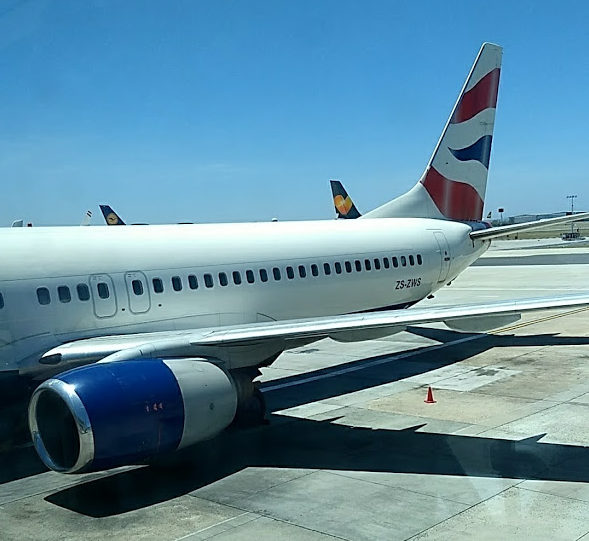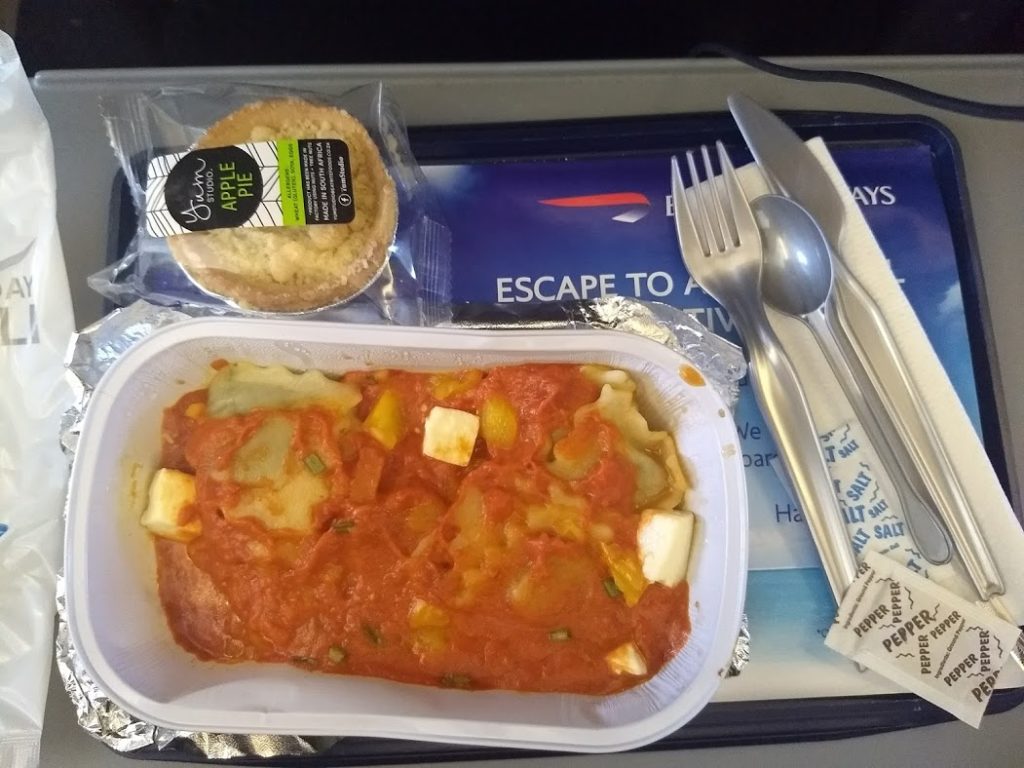One of the most unique parts of the British Airways operation is in South Africa. BA operates long haul flights from London to Cape Town and Johannesburg. However, they also have a branded domestic operation within South Africa (operating in all major cities) and a regional operation between South Africa and other destinations in southern Africa (Mauritius, Namibia, Zambia, and Zimbabwe). The flights are competitively priced versus South African Airways, although fares are usually a bit higher than low cost carriers (including Kulula, its affiliated carrier). And they operate a nonstop route between Cape Town and Durban, which is a route I wanted to take. Better yet, the flight was competitively priced versus the low cost carriers (I was able to book a sale fare) and even better than that, I was able to book the trip using my Chase Ultimate Rewards points.
“But wait a minute,” you might be saying. “That’s cabotage!” And yes, it would be, except that BA actually operates via a franchisee in South Africa. The operating carrier is Comair. There is a decal on the front of the plane (which is easy to miss) that indicates this and the flight attendants announce “operated by Comair” when stating the flight number, but most people would have no idea that they’re not flying with British Airways. The branding, marketing, frequent flier program, uniforms, Web site and even the inflight magazine are all BA. In fact, the only thing that would tip you off that it’s not quite BA is the fact that in South Africa, BA remains a full service carrier.

You’d never guess that this British Airways aircraft is actually operated by Comair
While BA sells domestic European fares that don’t include a carry-on bag, and BA has also cut meal service on its intra-Europe flights, Comair has maintained British Airways as a full-service carrier. I’m not entirely sure why this is the case; maybe it’s because they want to differentiate the product from their own low-cost carrier Kulula, or maybe it’s because they want to be competitive with South African Airways (which is also a full-service carrier). It’s also possible that the franchise agreement dictates the services they’re required to offer. Nevertheless, the service is differentiated in a good way.
I boarded late, so didn’t get good pictures of the aircraft cabin. However, there are a few things that were interesting. The first is that the “Club” cabin is different than both US first class carriers and domestic European carriers. The seats have slightly more pitch than economy class. They are slightly wider as well. This means there are 5 seats across in “Club” class (3×2), versus 6 across (3×3) in economy class. On a US domestic carrier, first class would be 2×2 and on British Airways in Europe, “Business” class would be 3×3, but with the middle seat blocked out. I think that this configuration is interesting; it’s more like a premium economy class than a business class, but with a wider and more comfortable seat.
My seat was in economy class. Like the rest of the British Airways operation, you have to pay for seat selection until check-in. I wasn’t able to check in using the mobile app, so ended up checking in online late via the BA Web site. This meant that the only two available seats were the very back row (right up against the toilet) or a middle seat in the front. Since I am on the road I didn’t have (or have access to) a printer. However, that’s OK; British Airways lets you compete the check-in procedure online (so you can select a seat) and then print out a boarding pass at the airport.
When I got to the Cape Town airport to check in, I asked whether any better seats were available. There was an “exit row” available. However, the seat maps with BA are really strange about what is considered an exit row. The very last row of the plane–the one where all the seats back up against the toilets and don’t recline–is considered an “exit row,” because it’s close to the rear exit. However, this comes with none of the benefits. In my case, I was given a seat in the row in *front* of the exit row, which isn’t actually an exit row at all, and which doesn’t recline. However, a non-reclining seat near the front beats a non-reclining seat right next to the toilets, so I was happy to move.
Since I carry the Chase Sapphire Reserve, I have a Priority Pass. I had enough time to visit a lounge and this granted me access to the Bidvest Premier Lounge. Although the lounge is a contract lounge in Cape Town, it’s actually really nice. There was an excellent lunch spread with both hot and cold dishes, a great beverage selection, and the lounge wasn’t crowded. There are even showers available for domestic flights (although they are temporarily not available in Cape Town due to government restrictions on water usage–Cape Town is suffering from the worst drought in 100 years). There is also a large table upstairs with power outlets and good, fast WiFi so you can get some work done. While I’m not sure any lounge is worth going to the airport early, it’s a great place to kill time if you do arrive early. The main part of the Cape Town terminal is great for Africa, but the gate areas can get very crowded because there is limited seating.
The aircraft was an older 737-800, originally delivered in 2002. It’s very much due for both a deep cleaning (there was set-in grime) and a cabin refresh; European BA cabins look a lot nicer but they also have been refitted with newer slimline seats while this aircraft has not been. The flight was almost completely full and only two hours long but the flight attendants still managed to get out a beverage service, a hot lunch, and a second beverage service.
One really annoying thing about flying to or within South Africa is the electronics rules. Held over from the early 2000s, airlines are absolutely zealous about allowing no use of portable electronics at all for completely unreasonable lengths of time. I was using my tablet and listening to headphones, and the flight attendant came by, scolded me, and made me turn everything off the moment we started descending. It’d be great to see South African aviation authorities retire these outdated and antiquated rules like most of the rest of the world has done.
Bottom line
While I don’t think it’s worth paying extra to fly British Airways in South Africa, I wouldn’t hesitate to fly them again. They got me to my destination safely, on time, with my bags, and I wasn’t hungry when I landed. And I got miles in my preferred frequent flier program (Alaska Airlines Mileage Plan)
Points I redeemed
The trip would have cost $78.39 in cash, but I redeemed 5,226 Chase Ultimate Rewards points. Yes, I realize that this was only 1.5 cents per point in value. However, this was far better value than the 7,500 Avios (plus $42 in taxes and fuel surcharges) the flight would otherwise have cost. In addition to this, I will receive 500 Alaska Airlines Mileage Plan miles for the flight (it’d only qualify for 125 Avios or American Airlines points because of the fare class I bought, but Alaska has a 500 mile minimum credit per flight). Although I might theoretically get some better value by preserving optionality for a future flight, this is a flight I wanted to take right now, it’s cash I didn’t want to spend right now, and it was available at the real price (not some arbitrarily higher price as is often the case) on the Chase portal. So to me, this was a no-brainer.

